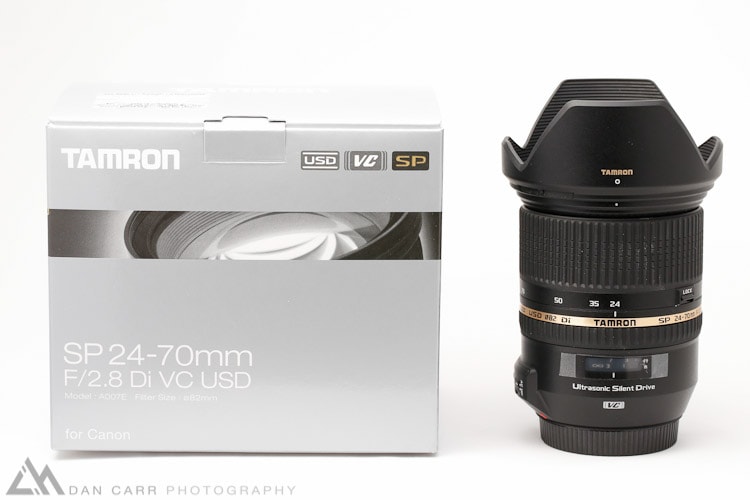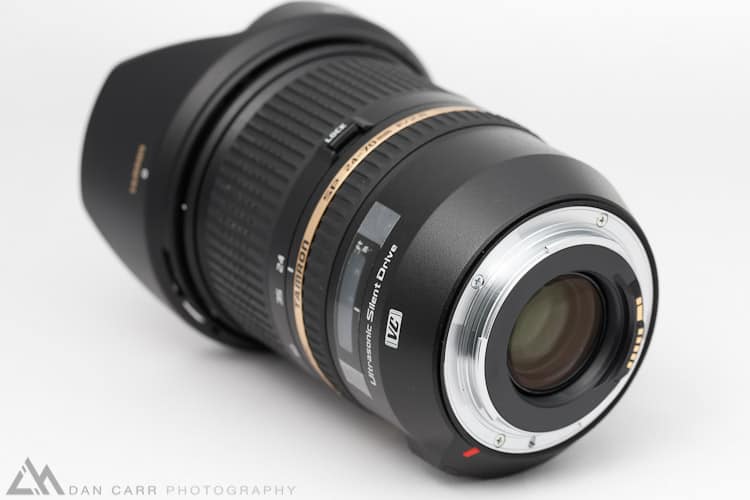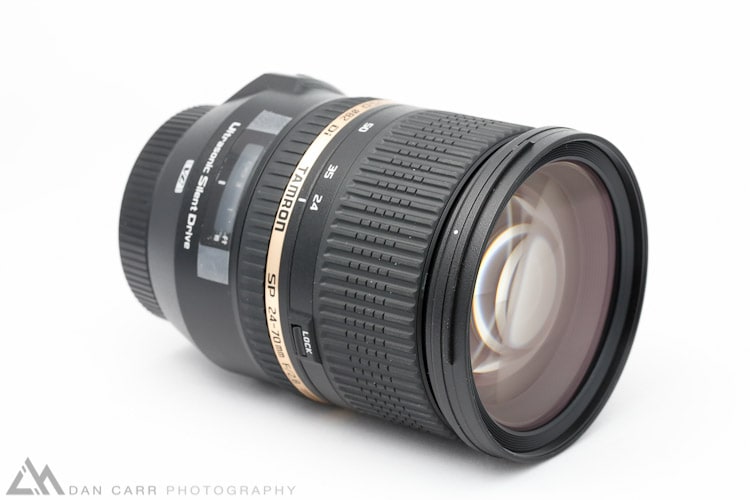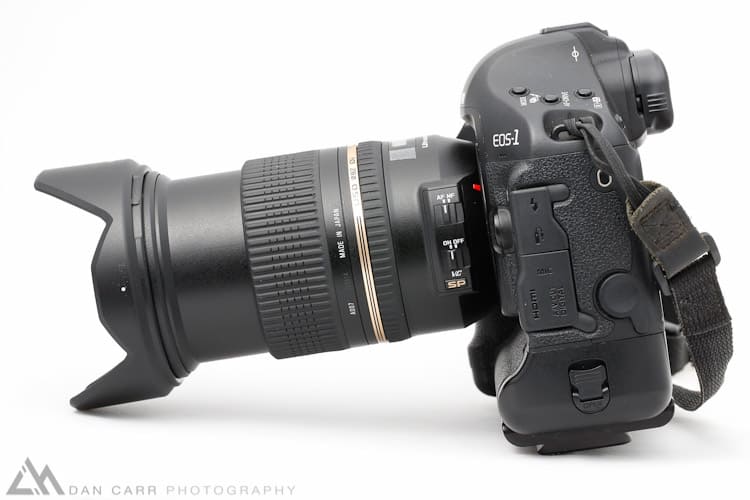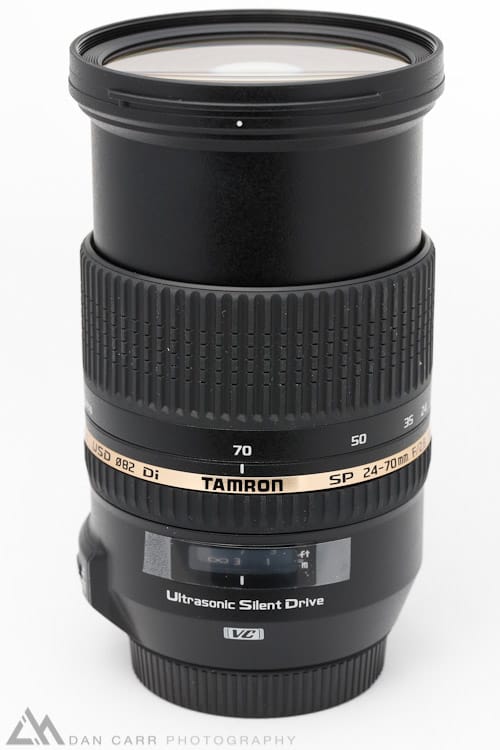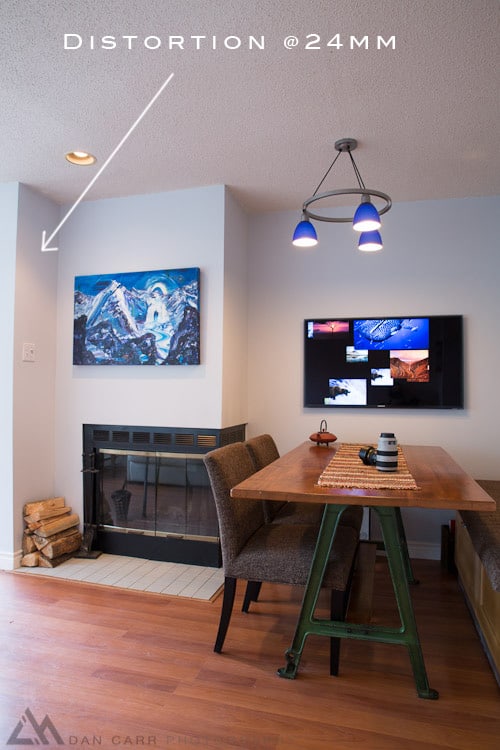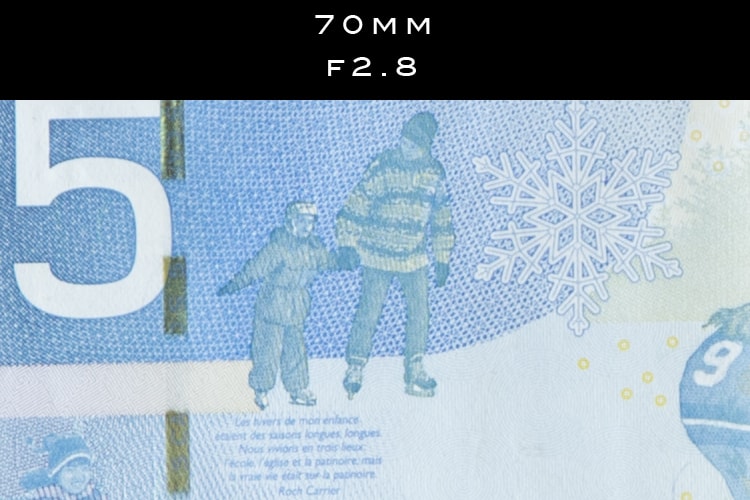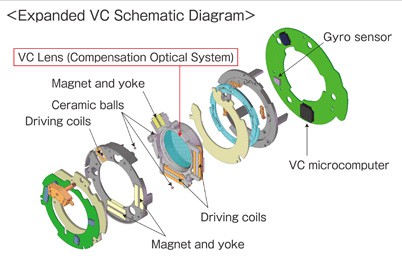I’ll admit to being a bit of a Canon lens snob, it’s fairly obvious if you look down my gear list anyway. In my career I’ve only owned one non-Canon lens and that was a Sigma 15mm Fisheye. The Tamron lens caught my eye, and the eyes of many others because it is the first (and still only) 24-70 f2.8 lens to feature image stabilization or Vibration Compensation as Tamron call it. Canon’s original 24-70 did not include it, in fact that lens may even have pre-dated the invention of it, but many people assumed that it would feature in their updated MKII lens. It didn’t though, which left a few people a bit flustered and more than a few wandering why Canon would bump the price nearly an extra $1000 to $2300 for the MKII lens. This left the door wide open for Tamron to deliver a more reasonably priced option. The kind folks at B&H Photo let me borrow the lens for a few weeks to make some evaluations.
First Impressions
Take a look at the following video for some hands on impressions. I like to show a video of a product in my hands to give you a better idea of its size and functionality.
All in all I’m impressed with the solidarity of the build and the lens’ physical quality. It is no lightweight though, coming in at 822g it will add some heft to your camera bag as any f2.8 zoom will tend to do. Having handled both the old Canon 24-70 f2.8 and the soon-to-be-released MKII 24-70 f2.8 I’d say that the build of the Tamron lies somewhere just below the earlier Canon version, but not by much. Obviously there’s nothing scientific about that statement, just a gut feeling based on having handles a lot of lenses.
Distortion
Zoom lenses will always sufferer from distortion and those with a wide angle at one end usually more so. The Tamron 24-70 exhibits large amounts of distortion at the wide (24mm) end as you can see in this interior image of my dining room. For Lightroom users there is of course a Lens Correction Profile that can be applied to counteract this but I still don’t like to see it in such large proportions. Any post ‘warping’ of the image to correct this sort of deficiency will also degrade the sharpness of other areas of the image so it’s not a free ride to perfection. This sort of distortion will not be too visible in things like landscape images but sticks out like a sore thumb (to me at least) when shooting interiors and exteriors of buildings.
Vignetting
Despite mediocre distortion results, vignetting is the weakest point with this lens. Again this can be corrected by the same lens profile as with distortion but not everyone uses Lightroom. Canon lenses have the benefit of being able to apply a corrective profile in camera to their JPEGS which for a lot of people means they would never notice these effects but you can’t do that with Tamron lenses. I believe there to be more than 2-stops loss of light in the corners when the lens is wide open on a full frame camera, easily noticeable in most shooting situations. Right in the very corners the vignetting is very dramatic as you can see below.
Chromatic Aberration
Backlit-through-the-trees scenarios like this one produced no visible chromatic aberration past about f4.5 and only very minimal fringing wider open. This is definitely a strong point of this lens and in this areas outperforms the older Canon 24-70 by some margin. This is good news because whilst again it is something that can be fixed in post it’s typically not as accurate to do so simply with a lens profile in my experience. With this lens though there will rarely be a need to fix CA for most people.
Sharpness & Contrast
I conducted some tests to check out the sharpness and contrast at both ends of the focal range in the center. I shot images of a $5 bill using mirror lockup on a tripod at various apertures. Each test was performed three times and the results compared and sharpest one chosen for viewing.
The lens appears to be a fair bit sharper at the wider end of the focal range with peaks at f5.6. Reasonably minimal degradation in contrast and sharpness wide open is a good sign. Diffraction effects cause the usual expected loss of sharpness at f16 and above but f16 is not all that bad, I’ve definitely seen worse in this area. All in all, a more than decent performance in the area of center sharpness. I also examined corner sharpness and found the results to be similarly impressive with only large amounts of detail smearing in the very last few pixels. Based on my own previous experience with the Canon 24-70 I would say that the Tamron out performs the Canon at wide open sharpness but they probably get pretty similar by f5.6. I never liked the Canon’s wide open performance, so much so that I never owned that lens for that very reason.
VC – Vibration Compensation
VC is simply Tamron’s version of Canon’s IS or Nikon’s VR. Many people were hoping that the new version of the Canon 24-70 f2.8 would include IS but in the end they decided not to go in that direction. I’m sure that they tested a version that included IS and can only assume then that there is a good reason they chose not to implement it. The most likely reason is that IS (or VR, VC) adds bulk and weight to a lens. Canon had already moved to an 82mm front element on the new lens and they probably decided that they had reached a point where the weight might be prohibitive. For those that really want IS then they can either choose the excellent Canon 24-105 f4 L IS or this Tamron 24-70. Tamron’s VC system has generally been well regarded and this lens’ unit is supposed to lend a 3-stop advantage. I did some direct comparisons with Canon’s 70-300 f4-5.6 L IS , with both lenses set at 70mm and found the results from the Canon lens to be a bit better. This makes sense since Canon claim a 4-stop advantage from their lens but the Tamron still performed well and the image ‘settled’ very quickly in the viewfinder on a half press of the shutter button.
Will VC be important for your shooting ? It isn’t going to help you stop movement of subjects, for that you simply need a faster maximum aperture in a low light scenario, but it will allow you to capture non moving subjects with an exposure that would require an equivalent of an f1.0 lens which is highly impressive. This gives an extreme range of flexibility for this lens and would make it a very good contender for someone that just wants to have one single, good quality lens for their DSLR. Many people think that people buy DSLRs for the ability to interchange lenses but the fact is that the majority of people end up just having the one lens (often a kit lens) and if that is your case then this would certainly be a good option.
VC is also a big consideration for people shooting video with a DSLR. If you are shooting handheld, or even using a simple shoulder rig / gun stock style rig then VC will add a lot to the smoothness of your final shot. I created a very simple test video below to show you what I mean. Quite simply I just tried to shoot a handheld video by lining up the edge of the frame with the edge of a painting on the wall of my living room. The comparison of the straight edges shows you very easily how much vibration there is in the shot so you can see the effect of turning on the Vibration Compensation. Certainly a worthy feature to have if you are doing a lot of run and gun shooting, and again a good reason for this to be a ‘one lens’ solution for your camera, especially for those shooting family videos alongside their photos. (NOTE: Check out the distortion that is visible in the bottom of the frame at 24mm)
Focus Breathing
Focus breathing is not something that I typically talk about unless it’s a video specific lens, and certainly not something that I dedicate a sub-heading to but with the Tamron 24-70 I feel it is worth more than a passing mention. Focus breathing is a change of focal length as a function of focal distance, so if you look through your viewfinder and rotate your focus ring you may well see that your field of view also changes very slightly. Typically, cheaper lenses breathe a lot more and hugely expensive cinema lenses don’t breathe at all. With photos it can be less of an issue because you can’t see the movement in the photo but with video it is a big issue. If you are shooting a shot and pulling focus from one point to another you will notice the lens simultaneously looks as if it is zooming. Optics companies like Zeiss, Angenieux and Cooke go to great expense and lengths in their optical design to make sure this doesn’t happen in their cinema specific lenses. Tamron on the other hand does not. This lens breathes more than any other lens that I can remember using and the video below will demonstrate this. All that I am doing in the video is changing the focus, yet the focal length is changing by several millimeters at the same time. This is a bit of a shame because by adding stabilization to this lens I think a lot of DSLR video shooters will take a look at this lens but that amount of breathing would drive me nuts. It’s more than I would expect to see on a lens of this price point.
Now with photos it’s less of an issue but you’d have to be aware of it if you were doing some critical framing of landscape subjects or perhaps interior photography. If you composed and then focused you may well find things looks a little different.
Pros & Cons
Pros
- Reasonably priced for an f2.8 zoom with stabilization
- The only 24-70 that has stabilization
- Solid build quality
- Lens hood engages solidly with a reassuringly loud ‘click’
- Well controlled chromatic aberration
Cons
- Very heavy vignetting when wide open on a full frame camera, to the extent that it would be significant on a crop camera as well
- Heavy distortion at 24mm
Conclusion
This lens is built better and handles better than I was expecting so kudos to Tamron for making a pro feeling lens that appears as if it would stand up to the rigors of every day shooting. Optically it doesn’t compete with the Canon versions but of course they are more expensive so the question is, is it good enough ? In many situations my answer would have to be yes it is. Who should be looking at this lens then ? I think it will find a place in the bags of a lot of new wedding photographers who are just starting out in the business. The 24-70 f2.8 has long been a staple for that sort of shooting and adding stabilization is fantastic for dark church interiors. Those sort of shooters will also have access to software that is easily capable of correcting the lens’ two biggest shortcomings, vignetting and distortion, which makes it less of an issue as long as you are aware of it and build the correction into your workflow. I also think that the lens will be well suited to general family photography for people who capture a lot of photos of their kids and family. The focal range reasonable but again the stabilization adds some valuable extra flexibility. For the most part, in that sort of usage you aren’t going to be overly worried about any of the deficiencies and the lens is more than adequately sharp to make beautiful prints with. I think the lens is very slightly overpriced at $1299 but suspect that it will fall relatively soon.
Purchase The Lens
If you plan on purchasing this lens then consider using this link to B&H. It doesn’t cost you any more but it does give me a small amount of money to continue to bring new content to the site.



